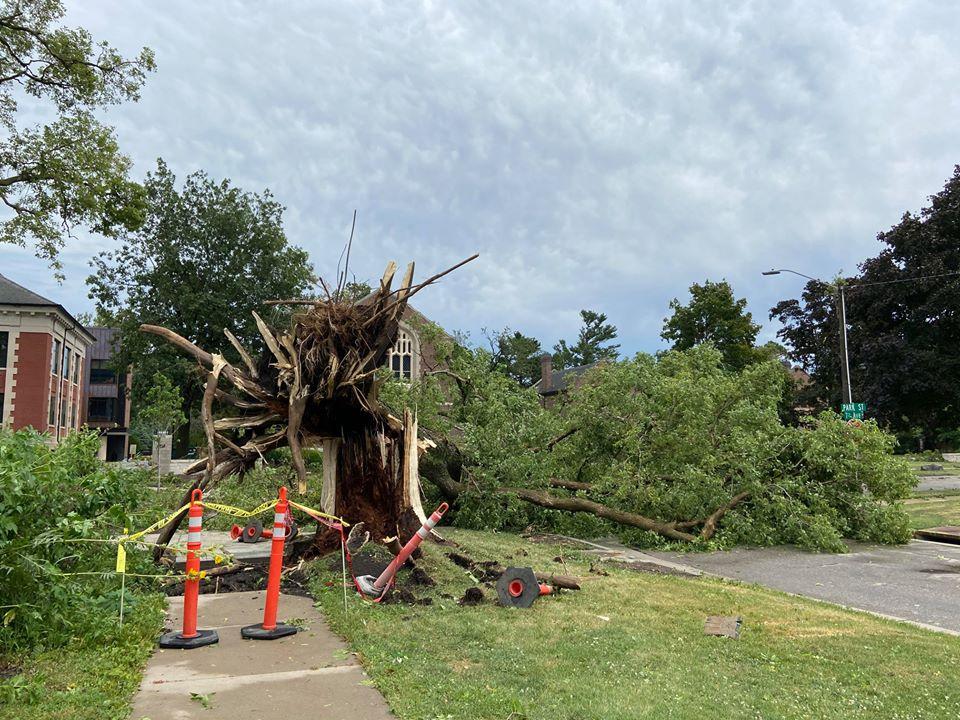The City of Grinnell felt severe storm damage on Monday as high-speed winds whipped through Poweshiek County, knocking out power and felling trees across the city.
There were no known serious injuries within the Grinnell city limits as a result of the storm, according to Grinnell Fire Chief Dan Sicard, but emergency services did respond to multiple calls in other parts of Poweshiek County (Sicard was unable to provide further details on these incidents).
“There is quite a bit of structural damage to both public infrastructure and private buildings,” Sicard said. He described buildings having their roofs ripped off and walls knocked in by the storm. Public works and fire department employees worked to clear the roads of fallen trees to allow vehicles to pass through, and Sicard says that the “vast majority” of streets are now open to thru traffic.
In an email shared with The S&B by SGA Vice President of Academic Affairs Fernando Rodriguez ’22, Associate Vice President of Student Affairs Sarah Moschenross wrote that Poweshiek County may open emergency shelters if power is not restored by midnight on Tuesday, with the College field house serving as a potential shelter location. Rodriguez also noted that the College has opened the dining hall to all students, including students living off campus.
Iowa governor Kim Reynolds issued a disaster declaration on Tuesday morning for six counties hit by the storm (Poweshiek County was not included).
Townspeople felt unprepared for the storm, as the county extreme-weather text-warning system exists primarily to warn residents of tornados, not thunderstorms with dangerous winds, so there was minimal advance notice of the severity of the incoming weather. Grinnell student Jude Grunder ’22 wrote in a Facebook message that people were outside in cars and on bicycles when the wind picked up to dangerous speeds.
The city of Grinnell is still without power. A Tuesday morning press release from Alliant Energy, the company that provides power to Poweshiek County, included a statement that power restoration across the state could take “several days”, longer for rural areas. Alliant plans to restore power first to “essential services and facilities critical to public health and safety such as hospitals, nursing homes, fire and police departments, and water systems”. Then, technicians will focus on restoring power “to the largest number of customers in the least amount of time”.
This is a developing story and will be updated as new information becomes available. View The S&B’s photo gallery for the aftermath of the storm here. Do you have more information on the derecho or the recovery work that you’d like to share with The S&B? Email newspapr@grinnell.edu and one of our writers will be in touch.




























































